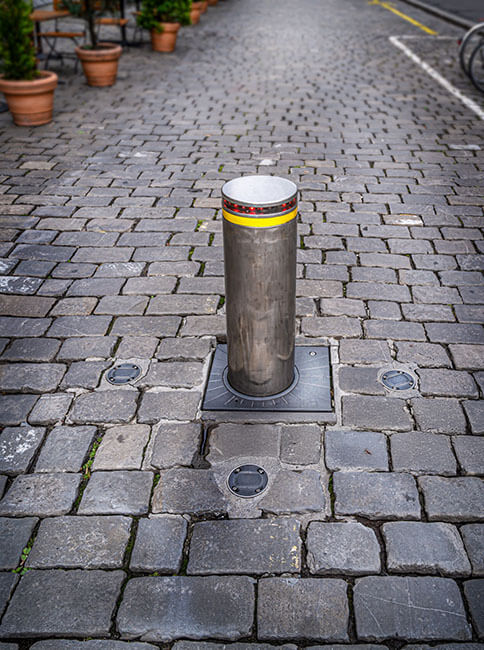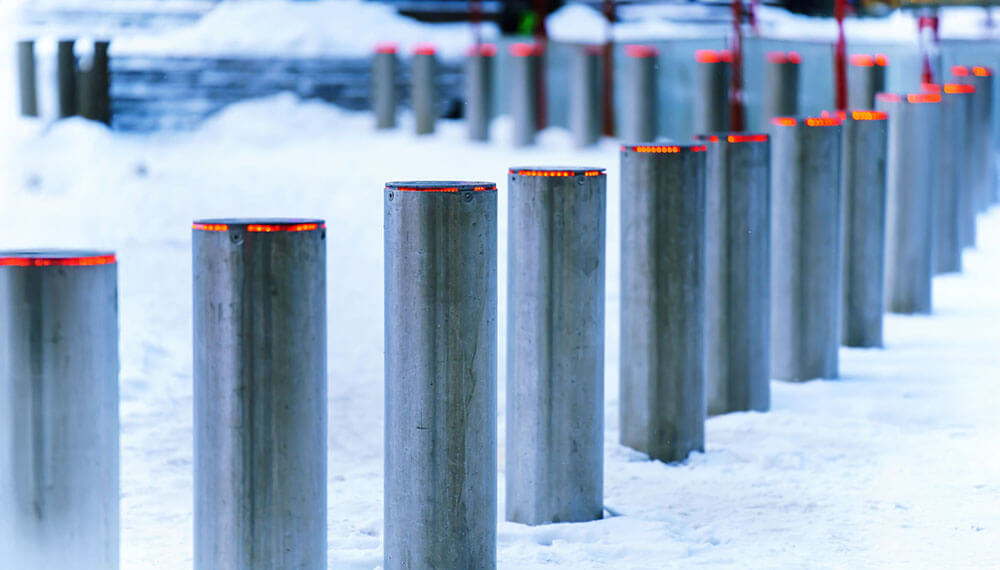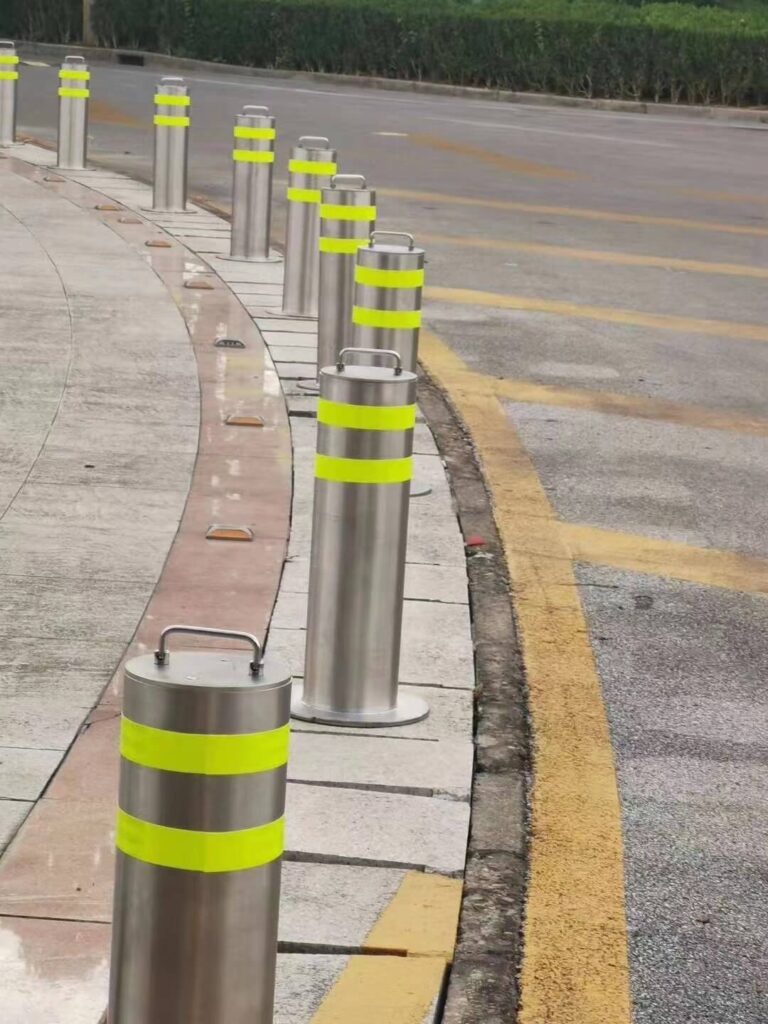Introduction
Bollards, seemingly simple in their design, play a multifaceted role in modern infrastructure, serving as critical elements for safety, security, and urban planning. From their historical origins as maritime mooring posts to their contemporary applications in traffic management and protective barriers, bollards have evolved significantly. This comprehensive glossary aims to demystify the diverse world of bollards, providing a detailed overview of their terminology, classifications, and functional nuances.
Understanding these distinctions is crucial for professionals involved in urban
development, security planning, and architectural design, ensuring the selection and deployment of appropriate bollard solutions for various environments. This article will explore the fundamental definitions, historical context, various types, and specialized applications of bollards, offering a foundational resource for anyone seeking to deepen their knowledge of these essential structural components.

Definition and Historical Context
A bollard, at its most fundamental, is a short, sturdy vertical post. While this simple definition holds true across its various applications, the specific function and design have diversified considerably over centuries. Historically, the term ‘bollard’ first appeared in the Oxford English Dictionary in 1844, primarily describing a post used to secure a ship’s mooring lines [1]. The etymology is thought to be derived from ‘bole,’ an Old English term referring to a tree trunk, highlighting their initial robust and upright nature.
However, the concept of such posts predates the formal term by millennia. Ancient Romans utilized carved stone posts for tethering animals, marking milestones along roads, and protecting buildings from horse-drawn vehicles [1, 5]. A notable evolution in their design and use occurred in the 17th and 18th centuries when decommissioned cannon barrels were repurposed. These heavy iron cannons, half-buried with their muzzles facing up, served as effective mooring posts on wharves and were adapted inland to direct traffic and safeguard stonework. The distinctive rounded tops of many modern bollards are a direct aesthetic legacy of these cannon bollards, where an oversized cannonball was often used to seal the muzzle against water and debri.
The transition of bollards from purely maritime functions to land-based traffic control and protection began to gain prominence in the early 1800s. Amsterdam, with its narrow streets
lacking curbs, saw residents and later the city itself install decorative cast iron posts to
prevent damage from increasing carriage traffic. These early traffic bollards, known as ‘Amsterdammertje,’ became iconic symbols of the city, delineating pedestrian areas and protecting storefronts. As vehicles grew heavier and more powerful, the materials and installation methods of bollards adapted, moving from wood to more robust materials like cast iron, steel, and concrete to withstand greater impacts.
Today, bollards are ubiquitous elements in urban and commercial landscapes, serving diverse roles that extend far beyond their original maritime purpose. Their evolution reflects a continuous adaptation to changing societal needs for safety, security, and efficient space management.
General Bollard Terminology
To navigate the diverse landscape of bollard applications and types, a clear understanding of general terminology is essential. These terms define the fundamental characteristics, components, and operational aspects of bollards:
•Poteau de borne: In its most basic form, this refers to the primary vertical structure of a bollard, typically made of steel, concrete, or other sturdy materials, designed to block or impede traffic and protect assets or pedestrians.
• Bollard Cover: A protective or decorative sleeve that fits over a bollard post. Covers are often made from high-density plastic and can enhance visibility, provide corrosion protection, or improve aesthetic appeal. They can be brightly colored for safety or designed to blend with architectural themes.
• Fixed Bollard: A bollard that is permanently installed in the ground, offering a constant physical barrier. These are typically embedded in concrete for maximum stability and impact resistance.
• Borne amovible: Designed for areas requiring flexible access control, these bollards can be manually removed from their in-ground sleeves when access is needed and reinserted to restrict entry. They are commonly used to secure parking spaces or control access during specific hours.
• Retractable Bollard: Also known as automatic or telescopic bollards, these are powered barriers that can be raised and lowered into the ground, often via remote control or automated systems. They provide dynamic access control, allowing traffic flow when lowered and creating a secure barrier when raised. These are ideal for areas with scheduled access requirements, such as pedestrian zones that open to traffic at certain times.
• Flexible Bollard: Typically made from durable, lightweight materials like polyurethane or polyethylene, these bollards are designed to bend upon impact without causing
significant damage to vehicles or the bollard itself. They are primarily used for visual guidance, lane delineation, and traffic calming rather than physical security.
• Decorative Bollard: While still serving a functional purpose, these bollards are designed with aesthetic considerations in mind, complementing the surrounding architecture and landscape. They can be purely ornamental or conceal a robust internal structure for security.
• Crash-Rated Bollard: These are high-security bollards specifically engineered and tested to withstand and stop vehicles traveling at certain speeds and weights. They are critical for protecting high-risk areas from vehicle-borne threats and are certified according to international standards like ASTM or K-ratings.
• Non-Crash-Rated Bollard: Bollards that are not designed or tested to stop vehicles in a high-speed impact. They serve as visual deterrents, traffic guides, or low-impact barriers, relying on the
perception of impediment rather than actual physical stopping power.
• Impact Resistance: Refers to a bollard’s ability to absorb and withstand kinetic energy from a collision. This can range from flexible bollards that rebound to high-impact bollards designed to stop heavy vehicles.
• Mounting Options: Describes how a bollard is installed. Common methods include embedded (set deep into the ground with concrete), surface-mounted (bolted onto an existing surface), and removable (inserted into a sleeve).

Classifications of Bollards by Function and Design
Bollards are categorized based on their primary function, design, and the level of protection they offer. This classification helps in selecting the most appropriate type for specific environmental and security needs.
1. Traffic Management Bollards
These bollards are primarily used to guide, delineate, and control the flow of pedestrian and vehicular traffic. They are essential for maintaining order and safety in various public and private spaces.
•Traffic Line or Street Bollards: These are strategically placed to guide vehicles towards appropriate areas, define roadways, or prevent access to restricted zones such as bike lanes, public squares, and traffic islands. They are particularly useful on roadways without curbs to prevent vehicles from straying. Often, they are used in conjunction with other traffic calming measures like speed humps.
• Pedestrian Bollards: Designed to define distinct pedestrian areas, these bollards enhance safety by separating foot traffic from vehicular routes. They can outline building perimeters, create safe zones around playgrounds or parks, and, when linked with chains, subtly encourage pedestrians to stay on designated paths without forming an absolute barrie.
• Construction Bollards: Temporary posts used in road construction zones to define and protect work areas from traffic. These are typically made of flexible, brightly colored plastic with reflective tape and are often placed closely together to create a continuous visual edge for oncoming traffic.
• Flexible/Delineator Bollards: Made from materials like polyurethane, these bollards are designed to flex upon impact, minimizing damage to both the vehicle and the bollard. They serve as visual guides and lane delineators, commonly found in parking lots, drive-thrus, and along highways.
2. Security and Protection Bollards
Security bollards are engineered to provide a physical barrier against vehicular threats, protecting people, property, and critical infrastructure from accidental collisions or intentional attacks.
• Safety Bollards: These are installed to minimize damage to vulnerable building components or infrastructure in the event of an accidental vehicle collision. They are often made of steel pipes filled with concrete and can be brightly colored for high visibility. Examples include protecting gas meters, water mains, or historical architectural features close to traffic.
• Ram-Raid Bollards: Specifically designed to prevent
ram-raiding, a type of burglary where a vehicle is used to forcibly enter a building. These bollards are robust enough to stop heavy vehicles and are often aesthetically integrated into shopping spaces with decorative covers.
• Anti-Terrorist/Crash-Rated Bollards: These represent the highest level of security, designed and tested to withstand severe vehicular impacts, often from large trucks traveling at high speeds. They are certified by standards such as ASTM or K-ratings and are deployed around government buildings, critical infrastructure, and high-pedestrian areas to prevent vehicle-borne terrorist attacks .
3. Access Control Bollards
These bollards offer dynamic control over vehicle access, allowing entry or exit as needed while maintaining security at other times.
• Bornes amovibles: As mentioned earlier, these provide flexible access. They are ideal for areas that need to be secured at certain times but allow vehicle access at others, such as private entrances or temporary event spaces.
• Retractable/Automatic Bollards: These bollards offer the most sophisticated access control, rising from or retracting into the ground. They are commonly used at entry points to secure facilities, pedestrian zones, or parking areas where automated, on- demand access is required.
• Collapsible Bollards: Similar to retractable bollards in function, but often manually operated. They can be folded down to allow access and raised to restrict it, providing a cost-effective solution for controlled access points .
4. Marine Bollards
Marine bollards are specialized posts used in maritime environments for mooring vessels. They are designed to withstand significant tensile forces from ropes and environmental conditions.
•Mooring Bollards: The original form of bollard, these are fixed to docks, quays, or ships to secure mooring ropes. They are typically made from robust materials like cast steel or ductile iron to ensure strength and corrosion resistance.
•Cleat Bollards: Compact bollards with horns, primarily used for smaller vessels, allowing easy attachment of mooring lines.
• Single and Double Bitt Bollards: Single bitt bollards are for basic mooring, while double bitt bollards accommodate larger ships and tidal variations, often featuring pegs to prevent line slippage.
•T-Head (Tee) Bollards: Designed for heavy-duty tasks, these bollards can handle steep line angles and multiple ropes, making them suitable for larger vessels and high-stress mooring situations.
•Kidney Bollards: Characterized by their curved shapes, these bollards are designed to reduce rope wear and are suitable for environments with moderate tidal ranges.
• Pillar Bollards: Cylindrical bollards common in commercial ports, used for lassoing lines and suitable for areas with small tidal variations.
• Stag Horn Bollards: Horn-shaped bollards that can accommodate multiple lines at various angles, often found in large wharves.
• Cruciform Bollards: These cross-shaped designs offer versatility in mooring and are often specified in ISO standards for marine applications.
5. Aesthetic and Functional Enhancement Bollards
Beyond their primary safety and security roles, many bollards integrate additional functionalities or are chosen for their contribution to the visual appeal of a space.
•Lighted Bollards: These bollards incorporate lighting elements, serving the dual purpose of guiding traffic or pedestrians and illuminating pathways. They enhance visibility and safety, particularly in parks, walkways, and urban landscapes. Solar- powered lighted bollards are increasingly popular for their energy efficiency and low maintenance.
•Bike Parking Bollards: Designed to provide secure hitching points for bicycles, these bollards often feature loops or arms that allow multiple bikes to be locked safely. They help organize bike parking and prevent obstruction in public areas.
•Landscape Bollards: Used to define perimeters, mark pathways, or protect sensitive flora in parks and gardens, these bollards are often chosen for their decorative qualities and ability to blend seamlessly with the natural or designed environment.

Materials and Construction
The effectiveness and durability of a bollard are heavily dependent on the materials used in its construction and its structural design. Bollards are manufactured from a variety of materials, each offering distinct advantages in terms of strength, aesthetics, and resistance to environmental factors.
Common Materials
•Acier: Steel is one of the most common and versatile materials for bollards due to its high strength-to-weight ratio and durability. Steel bollards can be hollow or filled with concrete to enhance their impact resistance. They are often galvanized or powder- coated to prevent corrosion, especially in outdoor environments.
•Concrete: Concrete bollards are known for their mass and stability. They can be pre- cast or poured on-site and are frequently used for high-security applications, especially when reinforced with steel. Concrete offers excellent impact absorption and can be finished in various textures and colors for aesthetic integration.
• Cast Iron: Historically significant, cast iron bollards are still used today, particularly for decorative purposes. They offer a classic aesthetic and good durability, though they can be brittle under extreme impact compared to steel. Cast iron is often used for architectural bollards that complement traditional urban designs.
•Ductile Iron: A more modern variant of cast iron, ductile iron offers improved strength and ductility, making it more resistant to impact without fracturing. It is often used in marine bollards due to its robust properties.
•Stainless Steel: Chosen for its superior corrosion resistance and sleek, modern appearance, stainless steel is ideal for architectural and high-end security applications where aesthetics are paramount. It requires minimal maintenance and is particularly suitable for coastal or harsh environments.
•Polyurethane/Polyethylene: These plastics are primarily used for flexible or delineator bollards. Their inherent elasticity allows them to bend and return to their original shape after impact, making them suitable for traffic guidance where vehicle damage prevention is a priority.
•Recycled Plastic: An environmentally friendly option, recycled plastic bollards are durable, maintenance-free, and resistant to rot and insects. They are typically used for pedestrian guidance, landscaping, and low-impact traffic control.
Structural Considerations
The internal structure and installation method are as crucial as the material choice in determining a bollard’s performance.
• Embedded Installation: This involves setting the bollard deep into the ground, typically encased in concrete. This method provides the highest level of stability and impact resistance, making it suitable for security and crash-rated bollards. The strength of an embedded bollard is significantly influenced by the quality of its foundation.
• Surface Mounted Installation: Bollards are bolted directly onto an existing surface, such as concrete. While easier and quicker to install, surface-mounted bollards generally offer less impact resistance than embedded ones and are often used for demarcation or visual guidance rather than heavy-duty security.
• In-Ground Sleeves: Used for removable and retractable bollards, these sleeves are permanently installed in the ground, allowing the bollard to be inserted, removed, or retracted as needed. The sleeve itself provides the structural integrity when the bollard is in place.
• Reinforcement: For security bollards, internal reinforcement with rebar or steel pipes filled with concrete significantly enhances their ability to withstand vehicular impacts. The engineering of this reinforcement is critical for achieving specific crash ratings.

Conclusion
Bollards, in their myriad forms and functions, are indispensable components of modern infrastructure. From their humble beginnings as maritime mooring posts to their sophisticated roles in contemporary urban planning, security, and traffic management, their evolution reflects a continuous adaptation to societal needs. This glossary has aimed to provide a comprehensive understanding of the terminology and classifications that
define these essential structures. By delving into their historical context, diverse types, and the materials and construction methods employed, we gain a deeper appreciation for the engineering and design considerations that go into creating effective bollard solutions.
Whether for guiding pedestrians, protecting critical assets from vehicular threats, or managing access in dynamic environments, the right bollard solution is a testament to thoughtful planning and robust execution. As urban landscapes continue to evolve, the role of bollards will undoubtedly expand, necessitating ongoing innovation and a thorough understanding of their capabilities to ensure safer, more organized, and aesthetically pleasing environments for all.




